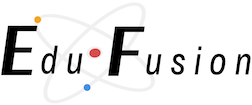Teaching complex and sometimes tricky ideas like fallacies to students is a challenge that I have found daunting in the years that I have taught critical thinking. I have limited time to explore and impart the important skills needed to spot the errors presented in arguments so that students will be ready to respond correctly when fallacies are presented in their lives. The main issue is not simply that they do not grasp the concepts, but that they are not adequately making it through the first phases of analogy and then on to abstract understanding. The problem may also be complicated because of how the brain processes information through heuristic and analytic channels and this can impact how a student processes information in the classroom and beyond. It takes more time for the analytic channel in the mind to work through and find the best solution. Without time, the heuristic channel takes over and belief-bias can block understanding. Time, though precious in the classroom, is a key element in helping students to overcome biases as they explore fallacies through learned definitions and then examples so that they can work through and find the best conclusion.
To facilitate a better experience overall, learned examples and then an identification may help to improve the outcomes and allow students to better grasp the concepts and find a context for identifying the fallacies. For this to work though, it is not simply about having the student read the definitions, but also explore examples of the types of fallacies once they already have a foundational understanding of the fallacy. As research suggests though, this can be a tricky process, especially if we try to work on both aspects at the same time. Atkinson, et al. (2000) characterize the research of Tramizi and Swelter thusly, “Tramizi and Swelter (1988) labeled this phenomenon the split-attention effect and hypothesized that it interfered with the student’s acquisition of schemas representing the basic domain concepts and principles that students should learn from examples” (187). They found that students encountered issues when they were presented with more than one phase of the process at a time.
An approach that might prove effective then is working through the definition stage and then move on to learning through examples. In my own classes, I have found it is very effective to find current examples of the types of fallacies and introduce them into the class discussion and then allow the students to discover the type of fallacy through exploration. As they test their knowledge of the definitions they are able to make connections with the information being presented and ideally work through to the best choice.
Another method that has proven effective is to allow students to introduce an example they have found into the class discussions in order to explore the example to see if what they have found is a fallacy or is just an example of something like rhetoric. As the students explore they can then put the pieces in place through methods like analogy and distinction. The video examples the students find help them to explore not just a fallacy, but the potential for bias in their thinking that could inhibit their ability to navigate the process of properly identifying a fallacy when presented in something like politics, news reports, etc.
Since bias will be an issue it is also important to help students to explore and understand this a bit more as they take time to explore and reason through faulty arguments like fallacies. It is also important for instructors to realize the perils of moving too quickly through material that could present belief bias interactions if students are pressured to respond too quickly. Trujii & Wantabe (2010) suggest that bias takes time to overcome because of the function of the brain and how two different pathways work to interpret the information. Understanding each of these is important because it helps to explain student reactions and also why it is important to allow more time to fully explore a fallacy so that students have time to work through the analytic system to reach the best interpretation of the information being presented.
There are two basic systems with the heuristic being one of them. The heuristic system, as explained in the dual-process theory, “tends to solve problems by relying on prior knowledge and belief” (Tsujii & Watanabe, 2010, p. 1320). In other words, the students will base their beliefs on what they already know and believe. This system acts as an autopilot when we need to make decisions quickly. The problem occurs when reasoning challenges a firmly held belief, which may be incongruent with the correct conclusion. As Tsujii & Wantabe (2010) suggest in their work, time-pressure affects how the information is filtered and also affects how effective the analytic pathway can interfere with the bias in order for the correct conclusion to be reached.
Then there is the second system, the analytic system, a slower counterpart to the heuristic system that takes more time to work through information, but reaches the correct conclusion. The key, as suggested by Tsujii & Wantabe (2010) is that there must be adequate time for this system to interfere with the heuristic system so that the logical system has time to actually examine the issue and make the decision. They state,
“The right IFC activity was critical to resolving conflicting reasoning but was time-consuming. So, when the right IFC activity was impaired in the short span trials in which subjects were not given sufficient time for reasoning, the subjects seem to have relied on the fast heuristic system, which resulted in belief-bias responses.” (1325)
When pressure is applied then and an answer must be given quickly and the information does not match what the person believes, then the bias-related system will quickly make a decision, even when it is incorrect or does not flow to a logical conclusion.
As educators, what does this mean for us as we work to help students explore concepts like fallacies though? It simply means that we need to take more time. If the students are rushed along so that everything can be covered, then they will have real problems identifying and understanding what is wrong, especially if the examples conflict with a previously held belief. If we take a deeper dive though, the students will be able to work through the analytic system to examine the details and recognize the error in thinking.
References
Atkinson, R. K., Derry, S. J., Renkl, A., & Wortham, D. (2000). Learning from examples: Instructional principles from the worked examples research. Review of Educational Research, 70(2), 181-214. Retrieved from https://search.proquest.com/scholarly-journals/learning-examples-instructional-principles-worked/docview/214116403/se-2?accountid=35812
Tsujii, T., & Watanabe, S. (2010). Neural correlates of belief-bias reasoning under time pressure: A near-infrared spectroscopy study. NeuroImage, 50(3), 1320-1326. http://dx.doi.org/10.1016/j.neuroimage.2010.01.026

